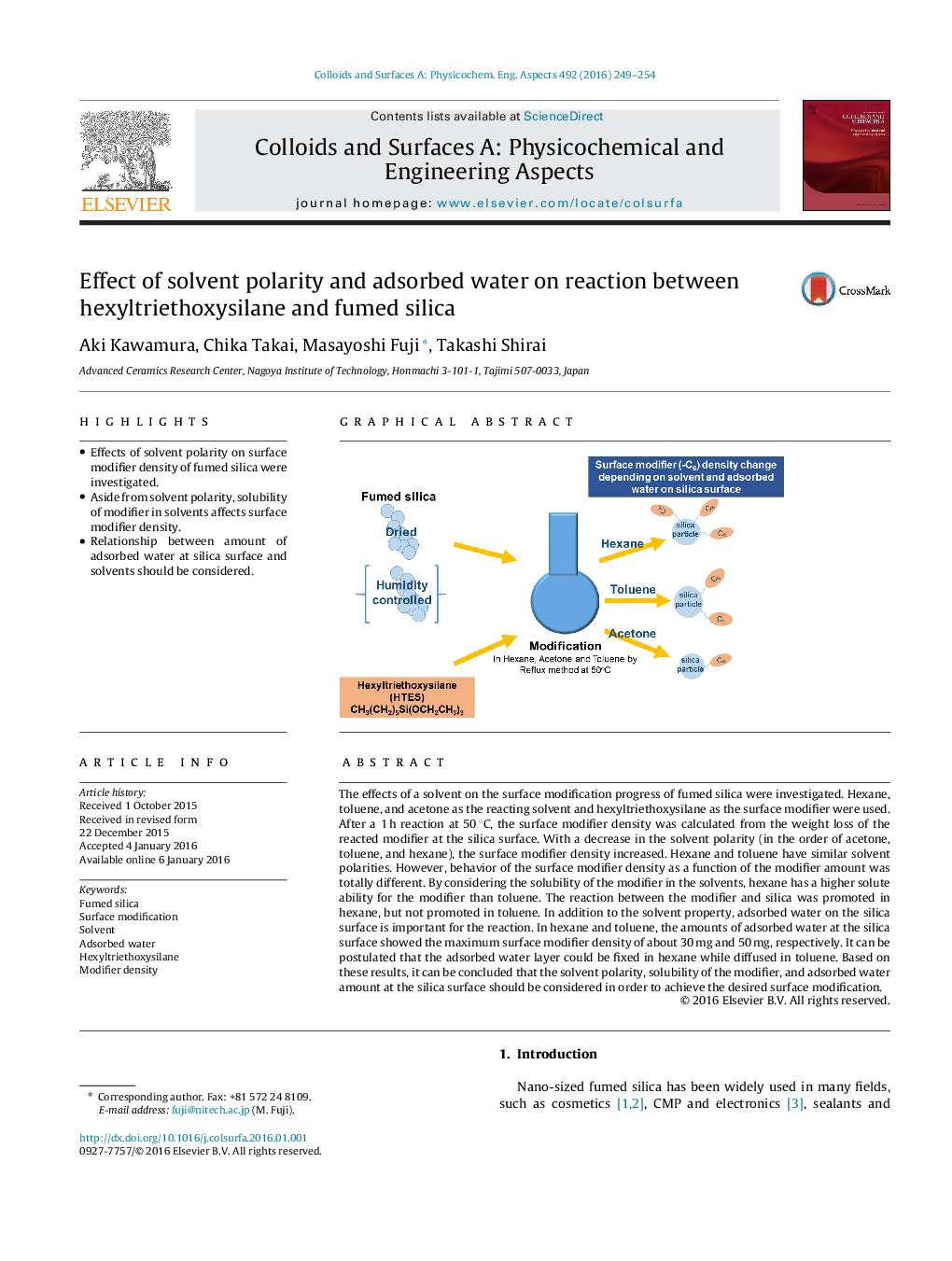| کد مقاله | کد نشریه | سال انتشار | مقاله انگلیسی | نسخه تمام متن |
|---|---|---|---|---|
| 591786 | 1453881 | 2016 | 6 صفحه PDF | دانلود رایگان |
• Effects of solvent polarity on surface modifier density of fumed silica were investigated.
• Aside from solvent polarity, solubility of modifier in solvents affects surface modifier density.
• Relationship between amount of adsorbed water at silica surface and solvents should be considered.
The effects of a solvent on the surface modification progress of fumed silica were investigated. Hexane, toluene, and acetone as the reacting solvent and hexyltriethoxysilane as the surface modifier were used. After a 1 h reaction at 50 °C, the surface modifier density was calculated from the weight loss of the reacted modifier at the silica surface. With a decrease in the solvent polarity (in the order of acetone, toluene, and hexane), the surface modifier density increased. Hexane and toluene have similar solvent polarities. However, behavior of the surface modifier density as a function of the modifier amount was totally different. By considering the solubility of the modifier in the solvents, hexane has a higher solute ability for the modifier than toluene. The reaction between the modifier and silica was promoted in hexane, but not promoted in toluene. In addition to the solvent property, adsorbed water on the silica surface is important for the reaction. In hexane and toluene, the amounts of adsorbed water at the silica surface showed the maximum surface modifier density of about 30 mg and 50 mg, respectively. It can be postulated that the adsorbed water layer could be fixed in hexane while diffused in toluene. Based on these results, it can be concluded that the solvent polarity, solubility of the modifier, and adsorbed water amount at the silica surface should be considered in order to achieve the desired surface modification.
Figure optionsDownload as PowerPoint slide
Journal: Colloids and Surfaces A: Physicochemical and Engineering Aspects - Volume 492, 5 March 2016, Pages 249–254
